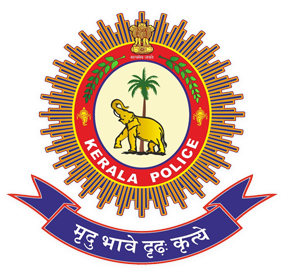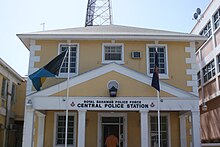Inspector, also police inspector or inspector of police, is a police rank. The rank or position varies in seniority depending on the organization that uses it.
Police commissioner is a senior rank in many police forces of the world. In other jurisdictions, it is the title of a member of an oversight board.
Assistant superintendent, or assistant superintendent of police (ASP), is a rank that was used by police forces in the British Empire and is still used in many police forces in the Commonwealth. It was usually the lowest rank that could be held by a European officer, most of whom joined the police at this rank. In the 20th century, it was in many territories opened to non-Europeans as well.
Superintendent (Supt) is a rank in the British police and in most English-speaking Commonwealth nations. In many Commonwealth countries, the full version is superintendent of police (SP). The rank is also used in most British Overseas Territories and in many former British colonies. In some countries, such as Italy, the rank of superintendent is a lower rank.

The Jamaica Constabulary Force (JCF) is the national police force of Jamaica.

Gazetted officers include all the Indian Police Service officers which are Class I officers of the cadre and all State Police Services officers of and above the rank of Deputy Superintendent of Police. All are arranged in a hierarchical order.

Ellison Edroy Greenslade QPM is a Bahamian retired police officer who was Commissioner of Police of the Royal Bahamas Police Force, and then became the Bahamas High Commissioner to the Court of St. James's.
The New Year Honours 1913 were appointments by King George V to various orders and honours to reward and highlight good works by members of the British Empire. They were announced on 3 January 1913.
The King's Birthday Honours 1951 were appointments in many of the Commonwealth realms of King George VI to various orders and honours to reward and highlight good works by citizens of those countries. The appointments were made to celebrate the official birthday of the King, and were published on 1 June 1951 for the British Empire, Australia, New Zealand, Ceylon, and Pakistan. These were the last Birthday Honours awarded by George VI, who died eight months later.
The 1931 New Year Honours were appointments by King George V to various orders and honours to reward and highlight good works by citizens of the United Kingdom and British Empire. They were announced on 30 December 1930.
The 1924 New Year Honours were appointments by King George V to various orders and honours to reward and highlight good works by members of the British Empire. They were published in The London Gazette on 1 January 1924.
The New Year Honours 1925 were appointments by King George V to various orders and honours to reward and highlight good works by members of the British Empire. They were published on 30 December 1924.
The 1948 Birthday Honours were appointments by King George VI to various orders and honours to reward and highlight good works by citizens of the Commonwealth Realms. The appointments were made to celebrate the official birthday of the King, and were published in The London Gazette on 4 June.
The 1947 King's Birthday Honours were appointments by many of the Dominions of King George VI to various orders and honours to reward and highlight good works by citizens of those countries. The appointments were made "on the occasion of the Celebration of His Majesty's Birthday." They were announced in supplements to the London Gazette of 6 June 1947.
The 1937 New Year Honours were appointments by King George VI to various orders and honours to reward and highlight good works by citizens of the United Kingdom and British Empire. They were the first honours of George VI's reign and were announced on 29 January 1937.
The 1932 New Year Honours were appointments by King George V to various orders and honours to reward and highlight good works by citizens of the United Kingdom and British Empire. They were announced on 29 December 1931.
The 1934 New Year Honours were appointments by King George V to various orders and honours to reward and highlight good works by citizens of the United Kingdom and British Empire. They were announced on 29 December 1933.

The Kerala Police is the law enforcement agency for the Indian state of Kerala. Kerala Police has its headquarters in Thiruvananthapuram, the state capital. The motto of the force is "Mridhu Bhave Dhrida Kruthye" which means "Soft in Temperament, Firm in Action" in Sanskrit. It operates under the Department of Home Affairs, Government of Kerala. The force is headed by the State Police Chief, and the incumbent chief is Shaikh Darvesh Sahib, IPS.
The police in Canada's ranks differ according to the different police forces and depend on different laws at the federal, provincial, and municipal levels.





